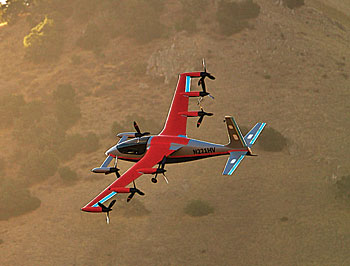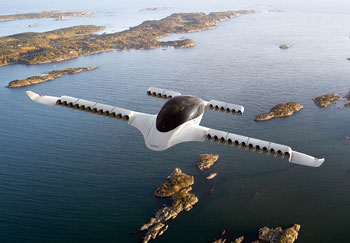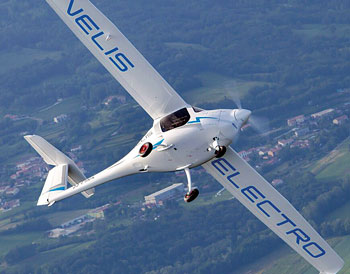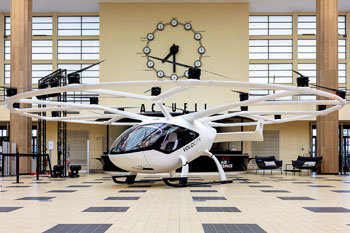INDIAN ARMED FORCES CHIEFS ON OUR RELENTLESS AND FOCUSED PUBLISHING EFFORTS

The insightful articles, inspiring narrations and analytical perspectives presented by the Editorial Team, establish an alluring connect with the reader. My compliments and best wishes to SP Guide Publications.

"Over the past 60 years, the growth of SP Guide Publications has mirrored the rising stature of Indian Navy. Its well-researched and informative magazines on Defence and Aerospace sector have served to shape an educated opinion of our military personnel, policy makers and the public alike. I wish SP's Publication team continued success, fair winds and following seas in all future endeavour!"

Since, its inception in 1964, SP Guide Publications has consistently demonstrated commitment to high-quality journalism in the aerospace and defence sectors, earning a well-deserved reputation as Asia's largest media house in this domain. I wish SP Guide Publications continued success in its pursuit of excellence.
- A leap in Indian aviation: Prime Minister Modi inaugurates Safran's Global MRO Hub in Hyderabad, Calls It a Milestone
- All about HAMMER Smart Precision Guided Weapon in India — “BEL-Safran Collaboration”
- India, Germany deepen defence ties as High Defence Committee charts ambitious plan
- True strategic autonomy will come only when our code is as indigenous as our hardware: Rajnath Singh
- EXCLUSIVE: Manish Kumar Jha speaks with Air Marshal Ashutosh Dixit, Chief of Integrated Defence Staff (CISC) at Headquarters, Integrated Defence Staff (IDS)
- Experts Speak: G20 Summit: A Sign of Global Fracture
Propelling and Collaborating for an Electric Future
Newer and innovative eVTOLs, electric motors, engines, pertnerships and designs are continuously pacing up the UAM ecosystem

With an increased focus on reducing the carbon emissions, the aviation industry is constantly designing ways to innovate. In that attempt, electric propulsion aircraft are gaining momentum as a large number of autonomous electric aircraft and engines are being developed. There are multiple players in the market now, some of the major ones who are leading the electric aviation scenario have been curated below.
AIRBUS
European manufacturer, Airbus commenced on its electrification journey a decade ago, developing the world’s first all-electric, four-engine aerobatic aircraft, CriCri. Since then, they have been progressing in the electrification of flight. Airbus’ all-electric, twin-propeller aircraft E-Fan successfully crossed the English Channel in 2015, the electric vertical take-off and landing (eVTOL) demonstrator projects, Vahana and CityAirbus, have already completed many hours of flight testing programmes and E-Fan X is providing important insights on serial hybridelectric propulsion. On its path to zero-emission flight, Airbus’ EcoPulse, a distributed hybrid-propulsion aircraft demonstrator developed in partnership with Daher and Safran, completed wind tunnel testing this month.
Airbus is also working on the electrical engine cooling concept, considering that electrical engines produce heat while running, which is why they need a cooling system to lower temperatures, both on the ground and in flight.
ARCHER
California-based Archer Aviation debuted its Maker aircraft in June 2021. Backed by the United Airlines commercial order and the merger with Atlas Crest Investment Corporation, the company is valued at $3.8 billion and is confident of its financial position to continue toward commercial launch in 2024. Archer stated that it’s creating the world’s first electric airline that moves people throughout the world’s cities in a quick, safe, sustainable, and cost-effective manner. As the world’s only vertically integrated airline company, Archer is designing, manufacturing, and operating a fully eVTOL aircraft that can carry passengers for 60 miles at speeds of up to 150 mph while producing minimal noise.
BYE AEROSPACE
American manufacturer, Bye Aerospace unveiled an eight-seat all-electric twin turbo-prop class airplane, the eFlyer 800 last month. Performance estimates for the aircraft include up to 320 knot cruise speed, 35,000 feet ceiling and 500 nm range with 45-minute IFR reserves at normal cruise speed of 280 knots. More recently, Europe’s first light jet fractional ownership brand, JetClub, has confirmed adding the Bye Aerospace electric eFlyer 800 to its fleet.
Safety features of the aircraft include two wing-mounted electric motors, each with dual redundant motor windings, quad-redundant battery packs and a full airplane parachute. One major highlight is that the eFlyer 800 will have only one-fifth the operating costs of traditional twin turboprops and is geared for the air taxi, air cargo, regional and charter aircraft markets. Bye claims it to be the first allelectric propulsion technology airplane that achieves twin-turboprop performance and safety with no CO2 and extremely low operating costs, made possible by the electric propulsion system and advanced battery cell technology that results in significantly higher energy densities.
Bye Aerospace and Safran are currently assessing the most efficient electric powertrain for the eFlyer 800. The plane’s customer deposit agreements are complete, and several are being developed with US and European airtaxi, air-cargo and air charter services. Bye Aerospace is also in the process of obtaining FAA Part-23 certification for the eFlyer 2 for the professional flight training mission and the four-seat eFlyer 4 for air taxi, cargo and advanced training uses. An agreement has also been signed with L3Harris Technologies to develop an all-electric, multimission aircraft that will provide intelligence, surveillance and reconnaissance (ISR) capabilities for domestic and international ISR mission operators.
EVE URBAN AIR MOBILITY SOLUTIONS
Eve Urban Air Mobility Solutions, (Eve) is developing a full portfolio of solutions to enable the urban air mobility (UAM) market and has been continuously taking efforts in that direction.
Eve, which is backed by Embraer and leading vertiport company Skyports created a partnership to develop UAM solutions, with a focus on vehicle-vertiport operations in early adopter markets in Asia and the Americas. The companies plan to use Eve’s zero-emission and low noise eVTOL vehicle, Urban Air Traffic Management (UATM) software, and UAM services to develop a concept of operations that will inform operational procedures, as well as vehicle and services development.
Eve, which is backed by Embraer and leading vertiport company Skyports created a partnership to develop urban air mobility (UAM) solutions, with a focus on vehiclevertiport operations in early adopter markets in Asia and the Americas
Eve had recently announced partnerships with Ascent, Helisul Aviation and Halo as well. With Ascent, the focus is on accelerating the development of the UAM ecosystem in Asia-Pacific markets while with Helisul Aviation, one of the largest helicopter operators in Latin America, it is to create an ecosystem-wide approach for UAM operations in Brazil. Helisul partnership includes an order for up to 50 eVTOLs with deliveries expected to start in 2026. With Halo, Eve is developing UAM products and services in the United States (US) and the United Kingdom. This partnership includes an order for 200 of Eve’s eVTOL aircraft (one of the largest in the UAM market), deliveries expected to start in 2026.
EVIATION AIRCRAFT
Israel headquartered Eviation Aircraft’s Alice, which is one of the earliest known names in the electric propulsion market is “designed from the ground up for a relaxing regional commute without any compromise on luxury”. Created in collaboration with an ecosystem of partners, Alice is built of innovative components from 11 countries to make flight the sustainable, affordable, quiet solution to regional travel. Alice will be available in the US and EU markets first.
In the most recent development, Honeywell Aerospace has unveiled a lightweight, low-maintenance cooling system for developers of UAM and electric aircraft, and has named Eviation’s Alice as a launch platform for the energy-efficient feature.


KITTY HAWK
First deployed in 2019, American manufacturer Kitty Hawk’s Heaviside is a single-passenger vehicle built on the promise of eVTOL technology.
In the expansion of its operations, recently, Kitty Hawk collaborated with emergency response and healthcare company Falck to establish a joint innovation platform creating a framework for Project Heaviside to be used in emergency response operations. This will enable eVTOL aircraft to be an addition to Falck’s services, increase flexibility and reduce emergency response time.
Another milestone was reached with AFWERX Agility Prime in May with the completion of the first operational exercise. A diverse group of industry and government operators, engineers, and test professionals assessed the ability to do medical evacuation, personnel recovery, and logistics with Kitty Hawk’s Heaviside.
Designed to be fast, small, quiet and green, the aircraft flies at up to 180 mph with a potential range of 100 miles plus reserves on a single charge. Heaviside takes off and lands in a 30×30 foot space, reaches sound levels of 38 dBA at 1,000 feet, is 100x quieter than a helicopter and requires less than half the energy per mile of a conventional electric car.
LILIUM
In March 2021, German Lilium revealed the development of its 7-Seater Lilium Jet, a unique aircraft design, technology and architecture. Earlier this year, it was announced that Lilium was pursuing concurrent certification of the Jet with the European Union Aviation Safety Agency (EASA), the European regulator, and the Federal Aviation Administration (FAA), its US counterpart, through provisions under the Bilateral Aviation Safety Agreement (BASA) between the EU and US.
Just this month, Lilium partnered with Honeywell to develop the Jet’s avionics and flight control systems. Honeywell’s Compact Fly-by-Wire System will act as the flight control system on the Lilium Jet, responsible for controlling its moveable parts, including the 36 control surfaces and ducted fans that will provide its high levels of maneuverability in every stage of flight.
MAGNIX
Headquartered in US, electric motor manufacturer, MagniX has developed the leading propulsion systems for electric aircraft, including motors, inverters and motor controllers, providing a family of complete electric propulsion units (EPUs). The EPUs include a series of enhanced features to enable a simplified, reliable, and convenient adoption of all-electric power, stated MagniX.
The magni350 EPU is a 450 SHP (Shaft horsepower), 350kW (kilowatt), 1600 Nm (nautical miles) – class EPU while the magni650 EPU is an 850 SHP / 640kW / 3000 Nm – class EPU. Each EPU includes a magni350 and magni650 motor respectively with a common-core architecture using the company’s magniDrive-100, which is a 170kW inverter / motor controller power electronics unit. Both motors operate at 2300 rpm (revolutions per minute) or less, are liquid cooled and designed for 30,000ft of altitude in unpressurised environments.
The magniDrive– 100 is a multi-application, high-performance power electronics solution including both the inverter and motor controller functions.

PIPISTREL
Slovenian light aircraft manufacturer celebrated one year of EASA granting the first type-certificate for a battery-powered aeroplane, the Pipistrel Velis Electro. “The interest sparked in the aviation community has been overwhelming, and one year after, the Velis Electro is becoming a favourite among pilots and flight schools,” stated the company. It also highlighted the first year of the Velis Electro in numbers and achievements:
- Five aircraft per month: current production rate of the Velis Electro.
- SixVelis Electro ordered by launch customer, the French Aeronautical Federation (FFA).
- 50 aircraft plus 150 options is the largest order so far, by Green Aerolease.
- 13 aeroplanes form the largest fleet currently in operation by AlpinAirPlanes, accumulating an average of 150 flight hours per month in 10 Swiss flight training organisations.
- Nine countries already operating the Velis Electro: Belgium, France, Germany, the Netherlands, Norway, Slovenia, Sweden, Switzerland, and the United Kingdom.
- 200+ pilots have received their endorsements to fly the Velis Electro.
- 29 pilot instructors have been approved to train on the aircraft.
- 27 Part-66 licensed mechanics from 9 Part-145 maintenance organisations have been trained to maintain and repair the Velis Electro.
- 1500+ flight hours have been logged so far on the entire fleet, allowing to save 95 tonnes of CO2 with respect to older fuel-guzzling trainers (classic two-seat aircraft burning 20 kg of fuel per hour).
In the most recent development, two Velis Electro will be leased by the Danish Defence, becoming the first air force to operate electrically powered aircraft. The Danish Ministry of Defence has launched an action plan focusing on the transition to more environmentally friendly solutions.
Together with its Munich based subsidiary, Amazilia Aerospace, SF Express has also partnered with Pipistrel, to accelerate the development of commercial large scale UAV operation. Amazilia Aerospace will deliver an advanced digital flight control and vehicle management system for an innovative VTOL cargo drone designed and manufactured by Pipistrel.
ROLLS-ROYCE
Rolls-Royce is entering new aviation markets to spearhead sustainable power and as part of that mission the engine maker will be developing energy storage systems (ESS) that will enable aircraft to undertake zero emissions flights of over 100 miles on a single charge. To deliver this technology, the company is planning an £80m investment in ESS over the next decade to strengthen its position as the leading supplier of all-electric and hybrid-electric power and propulsion systems for aviation.
These aerospace-certified ESS solutions will power electric and hybrid-electric propulsion systems for eVTOLs in the UAM market and fixed-wing aircraft, with up to 19 seats, in the commuter market. By 2035, Rolls-Royce is planning to integrate more than 5 million battery cells per annum into modular systems.
In collaboration with airframer Tecnam, Rolls Royce is currently working with Widerøe – the largest regional airline in Scandinavia – to deliver an all-electric passenger aircraft for the commuter market, which is planned to be ready for revenue service in 2026. Rolls-Royce will deliver the entire electrical propulsion system including an energy storage system for the new P-VOLT aircraft.

VOLOCOPTER
German manufacturer, Volocopter has been at the forefront of UAM. On June 21, Volocopter, flew their Volocopter 2X eVTOL aircraft at Le Bourget Airfield during the Paris Air Forum. The flight demonstration of Volocopter 2X and the VoloCity model onsite showcased the progress made by the company in introducing eVTOL aircraft as an addition to existing transportation in the Paris region. The 3-minute remote controlled flight was the first public flight demonstration of an electrically powered air taxi in France. The Volocopter 2X flew a 500 m route at speeds up to 30 km/h and 30 m high. In September 2020, Volocopter was announced as the first vehicle and operations partner for the launch of the UAM industrial branch in Paris.
Volocopter is also working on an agreement with Groupe ADP and RATP Groupe to collaborate for the 2024 Olympics to strengthen regional connectivity in a meaningful way and showcase the benefits and key attributes of UAM. Recently, Volocopter also unveiled its newest aircraft, VoloConnect, at EBACE Connect. Expected to achieve certification within next five years, the eVTOL is designed to connect suburbs to cities and complements the company’s existing family of aircraft for the intra-city mission.
Volocopter’s aircraft family has been extending the company’s UAM ecosystem coverage to the suburbs with existing portfolio of UAM ecosystem solutions: VoloDrone, VoloCity, VoloPort, and the digital platform, VoloIQ.
Electric and hybrid-electric propulsion is rapidly revolutionising mobility technologies across industries with many more players and technologies being explored. It is also striking to witness multiple collaborations coming around which further ensures that electric propulsion is going to bring about a significant transition in the aviation industry.





